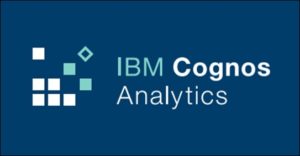Description
Introduction of Tableau for Financial Analysis:
Financial analysis is a crucial aspect of business decision-making, and effective visualization and reporting can provide valuable insights into financial performance. “Tableau for Financial Analysis: Visualizing and Reporting Financial Data” is a specialized training course designed to teach you how to use Tableau for financial analysis. This course covers techniques for creating financial dashboards, analyzing financial data, and generating reports that provide actionable insights. By the end of this course, you will be able to leverage Tableau to visualize and report on financial data, helping drive informed financial decisions in your organization.
Prerequisites:
- Basic knowledge of Tableau (creating visualizations, building dashboards)
- Understanding of financial concepts and terminology (e.g., income statements, balance sheets)
- Familiarity with basic data analysis and Excel is beneficial
Table of Contents:
1: Introduction to Financial Analysis in Tableau
1.1 Understanding Financial Analysis
– 1.1.1 Key concepts and importance of financial analysis
– 1.1.2 Overview of financial statements and metrics
– 1.1.3 Role of visualization in financial reporting
1.2 Overview of Tableau for Financial Analysis
– 1.2.1 Introduction to Tableau’s features for financial analysis
– 1.2.2 Navigating Tableau’s interface and tools for financial data
– 1.2.3 Setting up Tableau for financial reporting
1.3 Planning Your Financial Dashboards
– 1.3.1 Defining goals and requirements for financial dashboards
– 1.3.2 Identifying key financial metrics and KPIs
– 1.3.3 Designing an effective layout for financial reports
2: Connecting to Financial Data Sources
2.1 Importing Financial Data into Tableau
– 2.1.1 Connecting Tableau to financial data sources (spreadsheets, databases, ERP systems)
– 2.1.2 Configuring data connections for financial analysis
– 2.1.3 Handling common data issues (e.g., missing values, data types)
2.2 Preparing Financial Data for Analysis
– 2.2.1 Cleaning and transforming financial data in Tableau Prep(Ref: Real-Time Analytics with Tableau: Exploring Live Data Connections)
– 2.2.2 Creating calculated fields and custom metrics for financial analysis
– 2.2.3 Structuring data for effective reporting and visualization
2.3 Creating Data Extracts for Performance
– 2.3.1 Using extracts to improve performance with large financial datasets
– 2.3.2 Configuring extract refresh schedules for up-to-date reporting
– 2.3.3 Comparing live vs. extract connections for financial data
3: Building Financial Dashboards
3.1 Designing Financial Dashboards
– 3.1.1 Principles of effective financial dashboard design
– 3.1.2 Selecting appropriate visualizations for financial metrics (e.g., bar charts, line graphs, pie charts)
– 3.1.3 Creating financial summary dashboards and detailed reports
3.2 Visualizing Financial Metrics
– 3.2.1 Visualizing key financial metrics (revenue, expenses, profit margins)
– 3.2.2 Building time-series charts to track financial performance over time
– 3.2.3 Using heat maps and tree maps for financial data analysis
3.3 Creating Interactive Financial Reports
– 3.3.1 Adding interactive elements (filters, parameters, actions) to financial dashboards
– 3.3.2 Enabling drill-down and drill-through features for detailed analysis
– 3.3.3 Designing dashboards that facilitate financial decision-making
4: Advanced Financial Analysis Techniques
4.1 Performing Trend Analysis
– 4.1.1 Analyzing financial trends using trend lines and forecasting
– 4.1.2 Identifying seasonal patterns and cyclical trends in financial data
– 4.1.3 Creating moving averages and other trend indicators
4.2 Conducting Variance Analysis
– 4.2.1 Comparing actual vs. budgeted financial performance
– 4.2.2 Visualizing variances and deviations in financial metrics
– 4.2.3 Creating variance analysis reports and dashboards
4.3 Building Financial Scenarios and What-If Analysis
– 4.3.1 Using parameters and scenarios for financial modeling
– 4.3.2 Performing sensitivity analysis to evaluate financial impact
– 4.3.3 Visualizing different financial scenarios and their outcomes
5: Reporting and Sharing Financial Insights
5.1 Generating Financial Reports
– 5.1.1 Creating and formatting financial reports in Tableau
– 5.1.2 Exporting reports to PDF, Excel, and other formats
– 5.1.3 Customizing report layouts and designs for presentations
5.2 Publishing and Sharing Financial Dashboards
– 5.2.1 Publishing dashboards to Tableau Server or Tableau Online
– 5.2.2 Configuring user permissions and access controls
– 5.2.3 Sharing dashboards with stakeholders and generating links or embed codes
5.3 Ensuring Data Accuracy and Compliance
– 5.3.1 Implementing best practices for data accuracy and integrity
– 5.3.2 Ensuring compliance with financial reporting standards and regulations
– 5.3.3 Auditing and validating financial data in Tableau
6: Real-World Applications and Case Studies
6.1 Case Studies in Financial Analysis
– 6.1.1 Analyzing real-world examples of financial dashboards and reports
– 6.1.2 Lessons learned and best practices from various industries
– 6.1.3 Discussion of different approaches to financial data visualization
6.2 Implementing Financial Analysis in Your Organization
– 6.2.1 Designing financial analysis solutions tailored to organizational needs
– 6.2.2 Aligning financial dashboards with business objectives and strategies
– 6.2.3 Integrating Tableau with other financial tools and systems
7: Capstone Project and Review
7.1 Capstone Project Overview
– 7.1.1 Guidelines for the capstone project: Building a comprehensive financial dashboard
– 7.1.2 Selecting financial data and defining analysis requirements
– 7.1.3 Designing and implementing a financial reporting solution
7.2 Project Work and Presentations
– 7.2.1 Working on individual capstone projects
– 7.2.2 Peer review and group feedback sessions
– 7.2.3 Final project presentations
7.3 Final Review and Next Steps
– 7.3.1 Summary of key concepts and techniques
– 7.3.2 Exploring advanced topics and further learning resources
– 7.3.3 Course conclusion and participant feedback
This course is designed to provide you with the skills to effectively use Tableau for financial analysis, enabling you to create visualizations and reports that provide actionable insights into financial performance. The capstone project will allow you to apply these techniques in a practical context, ensuring you can leverage Tableau to enhance financial decision-making in your organization.
If you are looking for customized info, Please contact us here
Reference for Financial analysis







Reviews
There are no reviews yet.